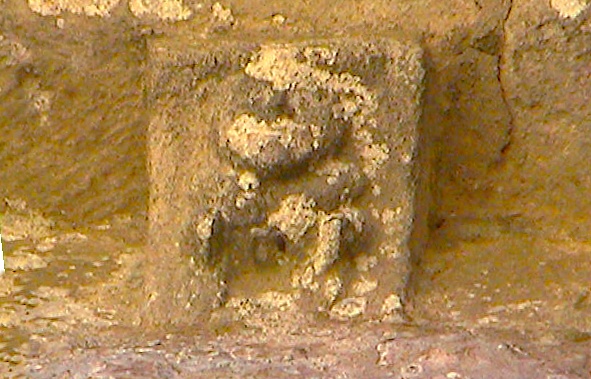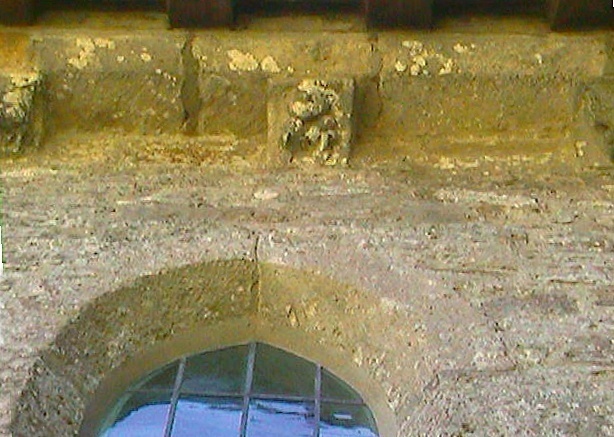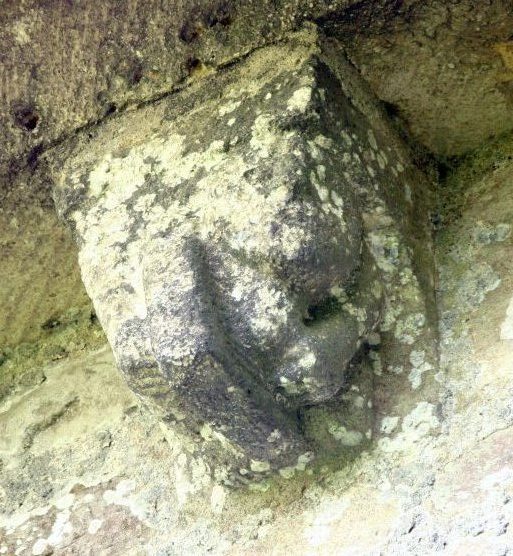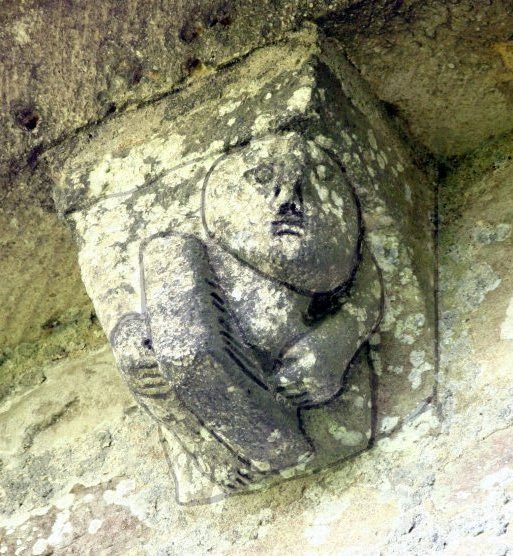Contents
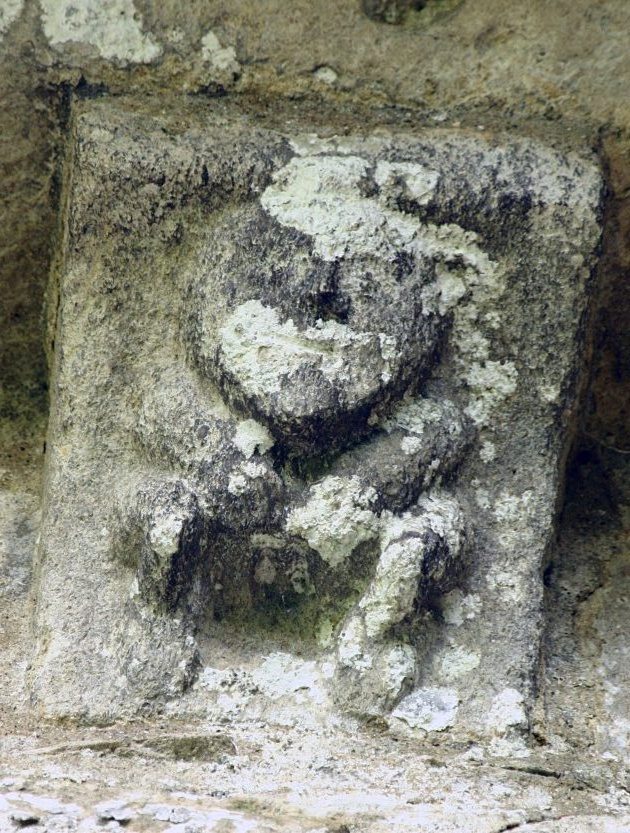
The Worth Matravers Sheela Na Gig
This figure was discovered by Dr Alex Woodcock and published in the paper “A Sheela Na Gig at Worth Matravers” in the proceedings of the Dorset Natural History and Archaeology Society. (It also appears in Dr Theresa Oakley’s Phd Thesis)
It resides on the church of St Nicholas at Worth Matravers which is some 10 miles east from the similarly dedicated church at Studland. Dr Woodcock states in his article that the figure predates the Studland figure by some 30 years and so may have served as inspiration (but it would seem not the model) for the Studland figure. There are also a number of acrobatic figures on the corbel table which also seem to have served as inspiration for some of the acrobatic corbels at Studland. Dr Woodcock does not give an exact date for the church but dates the corbels to the early years of the 12th Century. He also states that despite rebuilding in the church the sheela na gig is likely to be in its original position. Unfortunately the lichen encrusting the figure has made the exhibitionist nature of the carving less obvious. See Keith Jones’ figure below which shows the vulva more clearly.
Differing Styles
Its worth noting that despite the fact that both Studland and Worth Matravers have Sheela na gig figures the execution of them differs considerably. The Worth Matravers figure is fairly naturalistic being a recognisable humanoid female figure with a small but deeply incised vulva. The Studlandfigure however has a grossly exaggerated vulva and right hand and is barely humanoid. Only the now worn face gives away the fact it is meant to represent a female human. Despite the differing styles it is obvious from the corbels at both sites that they share the same influences and would seem to originate from the same “school” of sculptors. This begs the question why is there such a difference in the execution of the motif despite the proximity and obvious shared style of carving. Perhaps this indicates a development of the motif into an exaggerated form? (A disparity of styles can also be seen in the cluster of figures in Shropshire at Holdgate, Church Stretton and Tugford). Other figures on the church however seem to share characteristics with Studland. Two goat heads have their beards carved as parallel lines on the underside. A head at Studland also has its beard represented in the same way. In addition to the sheela Worth Matravers church also has a number of acrobatic figures. Studland too also has a number of acrobatic figures one of which may be a disguised exhibitionist.
The carving on the church is obviously connected with that of nearby Studland but it is also worth noting the similarity of the style of carving on both churches to that of Stoke Sub Hamdon some 50 miles or so to the North West. The faces of figures on both churches are represented in a similar flat manner.
John Harding
